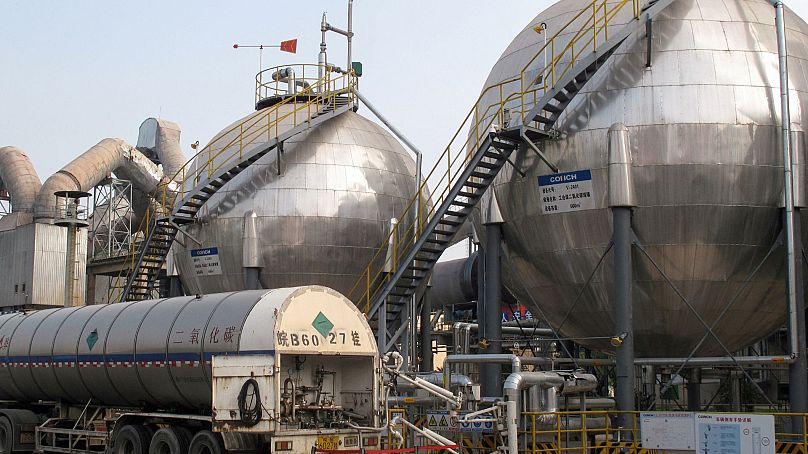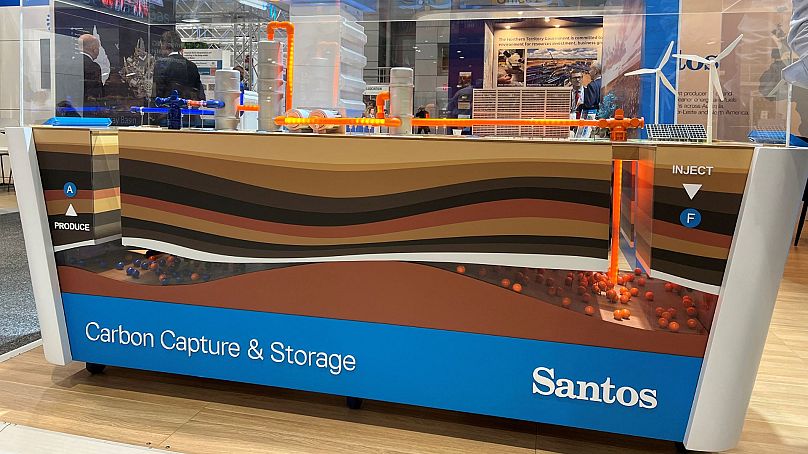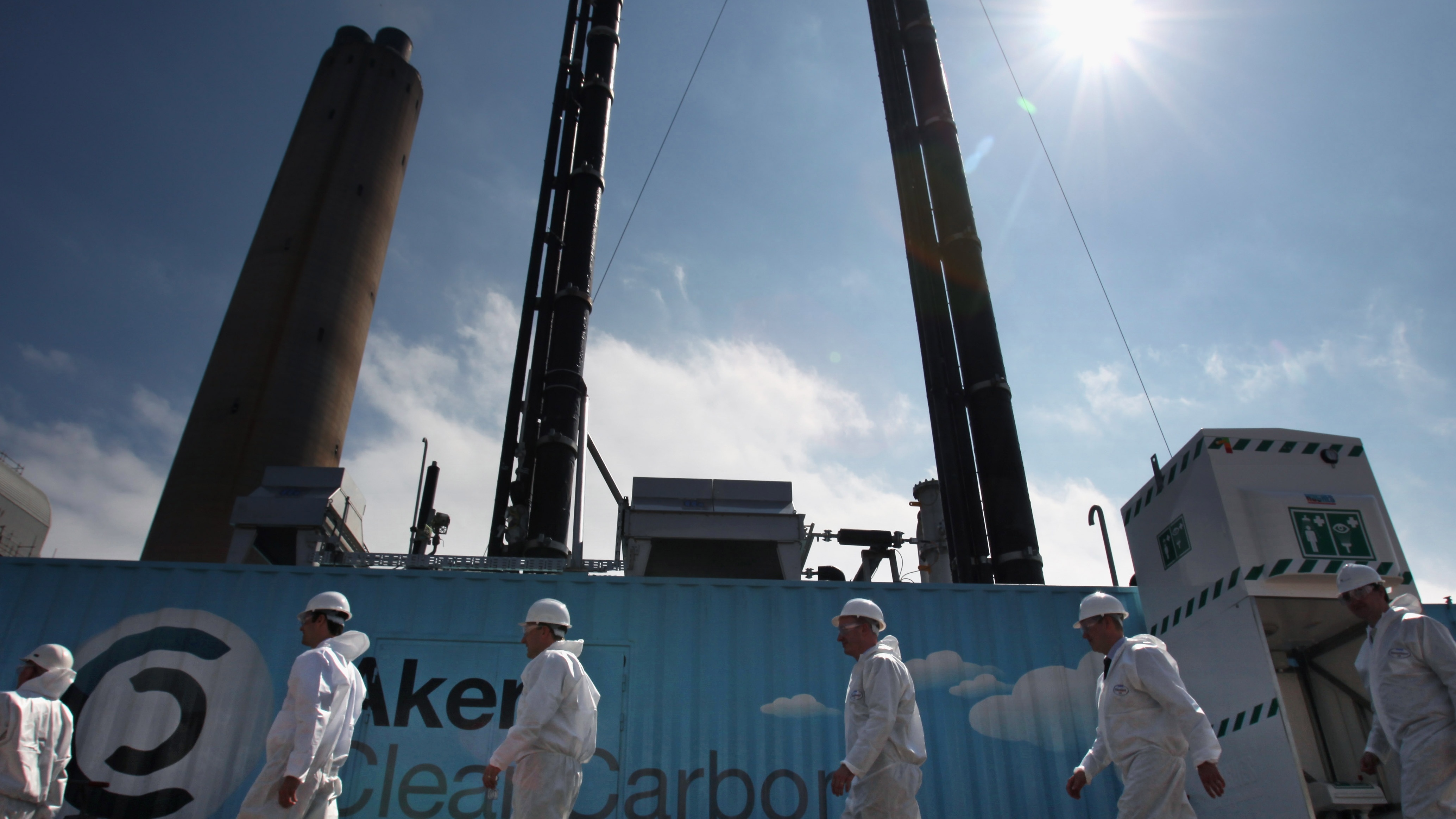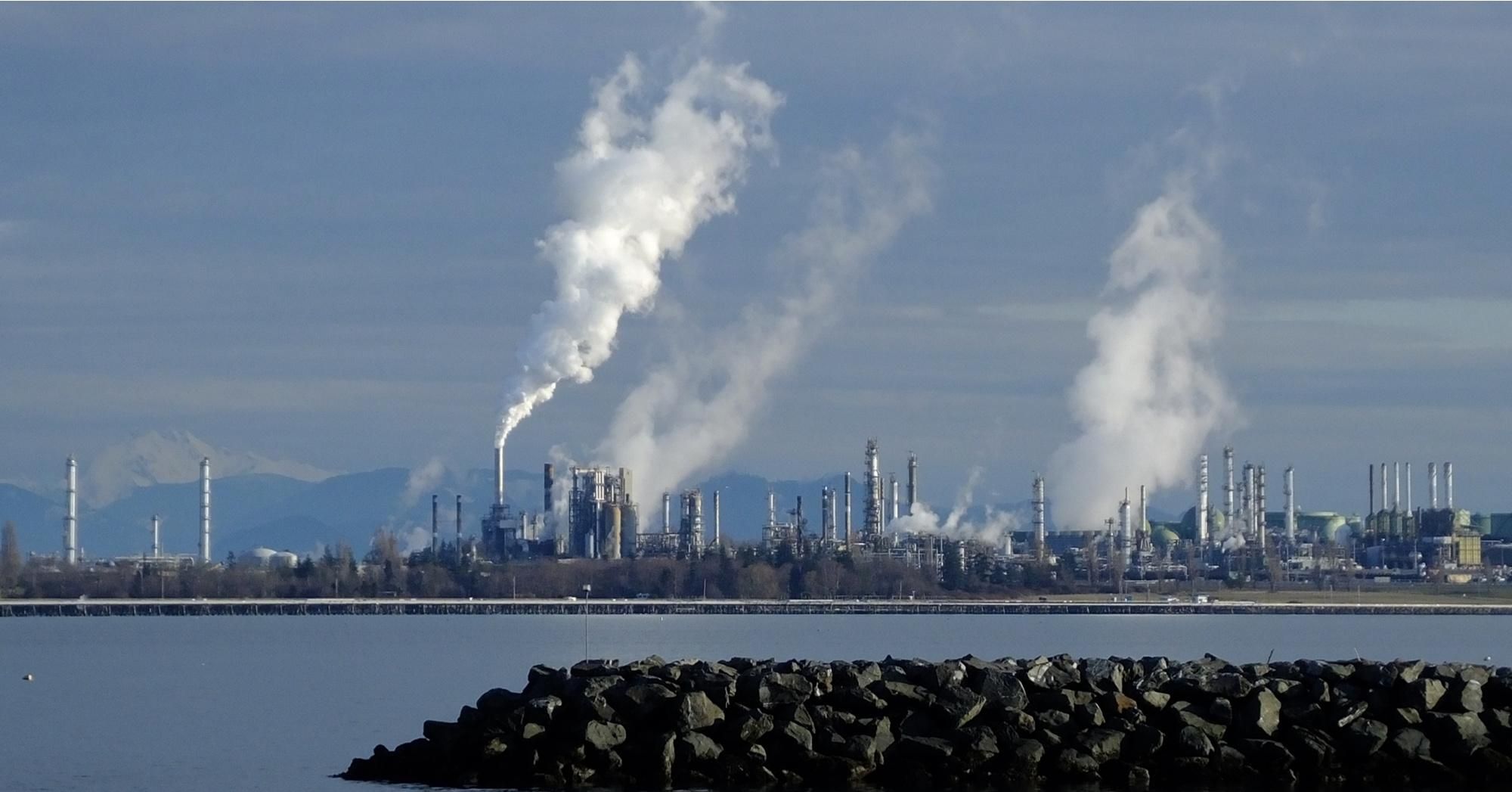The role of hydrogen in our low-carbon transition
Hydrogen fuel has long been hailed as the silver bullet that will free us from fossil fuels, but it's time for a reality check on its production and use in a low-carbon economy .
Mike Childs
Summary
Introduction
The environmental impacts of hydrogen production
Low-carbon hydrogen production
Prioritise using hydrogen when there are no practicable alternatives
Rapid decarbonisation requires a lot more hydrogen
Scale of renewable energy required
ANNEX
View as PDF
Summary
Hydrogen is being hyped as an easy way to provide low-carbon energy for heating, transportation and industry. But as this briefing shows, while hydrogen will be an important component of the low-carbon transition, its production will necessarily be limited over the next decade and it should be prioritised for uses where there’s no low-carbon alternative, such as industry. In other sectors, such as heating, alternative approaches will be needed.
Introduction
The UK has a legal obligation to achieve net-zero greenhouse gas emissions by 2050 at the latest, although Friends of the Earth and others are calling for this target to be achieved earlier. Regardless of the end date, it is cumulative emissions that matter in the fight against climate breakdown, which is why the UK’s Climate Change Act has interim targets in the form of 5-year carbon budgets.
The current fifth carbon budget mandates a 57% reduction in greenhouse gas emissions by 2030 but will need adjusting because of the new net-zero target. The Committee on Climate Change (CCC) will make recommendations in December 2020 for the scale of cuts required by 2030 (the mid-point of the fifth carbon budget), as well as making recommendations for 2035 (the sixth carbon budget).
The role of hydrogen in meeting the reduction targets is increasingly being discussed.
For example:
The National Infrastructure Commission (NIC) recently published a report1 stating that the cheapest route to zero-carbon power is 90% renewable energy generation, supported by burning hydrogen to make electricity when renewable energy production is low. It says that using hydrogen reduces total energy system costs by around 20%.
It’s also increasingly suggested that hydrogen could be used for zero-carbon production of steel, cement and other industrial products. The Oxford Institute for Energy Studies has recently published a detailed briefing2 on this issue.
Hydrogen is being promoted for use in some transportation, such as trains and heavy goods vehicles.
Over recent years the gas industry has been promoting a switch for home heating from natural gas to hydrogen3 (although in doing so it has been criticised for significantly under-estimating the costs, not fully considering the risks of leakages from home pipework not suited for hydrogen, and underplaying the challenges involved).2 See below for more discussion of hydrogen in heating.
The future role of hydrogen is broadly accepted but the question of how it should be produced remains. This choice could have a significant impact on greenhouse gas emissions. Key decisions must be made soon and making the wrong choices could perpetuate our reliance on fossil fuels.
The environmental impacts of hydrogen production
There are two broad routes for hydrogen production:
From fossil fuels, either gas using steam methane reformation (SMR) or coal. This is sometimes known as "blue hydrogen."
By electrolysis, using electricity to split water into hydrogen and oxygen. This is sometimes known as "green" hydrogen, particularly if the electricity used is from renewable sources.
Virtually all current global hydrogen production is made directly from fossil fuels. Only 2% of global hydrogen production is from electrolysis and it accounts for only 4% in the UK.
Production of hydrogen from fossil fuels is a carbon-intensive process
According to the CCC, hydrogen produced from natural gas by SMR has a carbon-emissions intensity of around 285 gCO₂/kWh. This excludes the impact of fugitive emissions from extraction of natural gas, estimated to be 15-70 gCO2e/kWh,4 although this could be 25-40% higher according to recent research.5 Hydrogen from coal gasification has an intensity of around 675 gCO₂/kWh.
In comparison, the carbon-emissions intensity of the electricity grid in 2019 was less than 200 gCO₂/kWh and is declining fast. Emissions from the global production of hydrogen are more than double the UK’s total territorial emissions.6
Carbon capture and storage will not deliver zero carbon
Hydrogen production from fossil fuels can be partly decarbonised by carbon capture and storage (CCS). However, doing so brings an energy penalty and extra costs. According to the International Energy Agency (IEA) Greenhouse Gas R&D Programme,7 CCS rates are generally designed to be 85-90% efficient (ie 10-15% of the carbon emissions aren’t captured). The IEA report suggested that while it should be technically possible to achieve capture rates of 99% using CCS, doing so brings an additional efficiency penalty for the power plant, meaning that even more energy is needed to produce the same amount of hydrogen. This in turn increases the amount of upstream fugitive emissions from the extraction and transportation of fossil fuels.
Low-carbon hydrogen production
Electrolysis using renewable electricity has negligible carbon emissions, although if it uses grid electricity, its emissions will be higher than the carbon-emissions intensity of the grid, because the production process is not 100% efficient. That’s why it’s better to use electricity directly, in electric vehicles for example, rather than converting it to hydrogen. As an illustration, in 2018 hydrogen made using grid electricity would’ve had a carbon-emissions intensity of 288-388 gCO₂/kWh, when the grid’s intensity was 216 gCO₂/kWh.
The carbon intensity of hydrogen production from the electricity grid is therefore already lower than hydrogen made from fossil fuels (see chart below). This difference will only increase over time as the carbon-emissions intensity of the electricity grid reduces. In 2019 it fell below 200 gCO₂/kWh and it’s forecast to drop below 100 gCO₂/kWh by 2030 and 41 gCO2/kWh by 2035.

Scaling up production and the real cost of producing hydrogen
Hydrogen production using natural gas (SMR) is an established process. This has the advantage that manufacturing capacity can be ramped up relatively quickly (the H21 project envisages a 12.5 GW hydrogen from natural gas plant, built in a modular 1.25 GW plant each year from 2026), but the downside is that there are unlikely to be significant cost reductions. However, the necessary CCS elements are still in development and in practice unlikely to be available at scale until the 2030s.
The government’s action plan for CCS states that "our ambition is that the UK should have the option to deploy [CCS] at scale during the 2030s, subject to the costs coming down sufficiently."8 The recent Budget stated it will invest "at least £800 million" for a CCS infrastructure fund that will support efforts to "establish CCS in at least two UK sites, one by the mid-2020s, a second by 2030."
Will CCS be at scale in time?
Given the chequered past of developing CCS in the UK, it would be a brave bet that the UK would have large-scale operational CCS facilities by 2030, when significant inroads to decarbonising heating need to be made.
Will hydrogen from natural gas be affordable?
The cost of making hydrogen from natural gas with CCS is also uncertain, because no plant is operational. One recent proposal to the government, for a CCS plant based in Aberdeen with its associated existing infrastructure, estimated the cost at 8 p/kWh, with peak hydrogen production of 6 tonnes/hour from a 200 MW plant.9 Unsurprisingly, this is considerably higher than wholesale natural gas prices, which average 1-2 p/kWh.10Such increased cost would be passed onto the consumer, significantly increasing the price of gas for home heating and making it at least as expensive as electricity.
Electrolysis – scope for cost reductions?
Hydrogen production using electrolysis is a newer technology, which will make it harder to scale up production quickly. However, a recent Bloomberg New Energy Finance (NEF) report says that the cost of electrolysers in North America and Europe has fallen by 40% since 2014, and costs are even lower in China (80% cheaper than those in the West).11
British company ITM has recently secured government support with others to develop a modular 100 MW electrolyser system with peak hydrogen production of 40 tonnes/day (this hydrogen could supply 0.6 TWh/year). Although this is a tiny fraction of the amount needed in the future and less than 2% of current UK hydrogen production, the project aims to "validate a complete production system capable of delivering hundreds of megawatts of electrolysers per year."12 This is the beginning of a process to start scaling up the production of hydrogen from electricity.
Hydrogen production from electrolysis also has the advantage that it can be located near to use, as it only needs an electricity supply and no carbon capture facilities. For example, it could be located at a train depot for hydrogen refuelling.
Cost of making hydrogen by electrolysis uncertain
As this is a newer technology, it has scope for significant further cost reductions, as has been seen in the renewable energy and battery sectors. The CCC suggested the cost might be around 6-8 p/kWh, although it also forecast much lower costs for hydrogen from natural gas with CCS at around 4 p/kWh. The more recent Bloomberg NEF report suggests that the costs of producing hydrogen by electrolysis may be similar to producing it from natural gas with CCS by 2030 and cheaper by 2050.11
According to the Oxford Institute for Energy Studies: "the levelised cost of SMR/CCS is likely to be significantly lower [than electrolysis] at current gas and electricity prices … In the longer term, assuming appropriate scale up and cost reduction of renewable electricity and electrolysis, it will be preferable for [electrolysis] to become the dominant production technology to minimise the continued use of fossil fuels."2
The NIC also sees natural gas being the main source for hydrogen production, albeit alongside electrolysis when electricity prices are low.1 A Navigant Consulting analysis on behalf of the Electricity Network Association assumes that hydrogen production costs will fall to 5-6 p/kWh by 2050, for both hydrogen from natural gas and electrolysis using dedicated renewables.13
Will hydrogen be affordable?
It’s likely that for at least the next decade, making hydrogen from natural gas will be cheaper than from electrolysis, but this may not be true in 10 years’ time. Both approaches are more expensive than natural gas, which poses affordability questions for some future uses, such as in households, where it could increase levels of fuel poverty. Significant scale-up of either approach is highly unlikely over at least the next 10 years, but for different reasons. The lack of CCS facilities at scale will hold back production of hydrogen from natural gas, whereas electrolysis is a developing technology that’s still exploring how to build capacity at scale quickly.
Current and future demands for hydrogen production
The UK currently produces and uses around 700,000 tonnes of hydrogen per year (equivalent to around 29 TWh). This is produced from natural gas using carbon-intensive processes without CCS. Nearly all of it is for refining fuels and ammonia production. Replacement of this with low-carbon hydrogen would be a sensible priority.
In the future, potential additional demand would be very significantly higher than this.
Decarbonising electricity
The NIC has recommended that the best low-cost route for decarbonising electricity production is by achieving 90% renewable energy by 2050, backed up by hydrogen combustion in 55 GW of turbines, producing 77 TWh of electricity.
Decarbonising industry
The CCC suggests up to 82 TWh of hydrogen might be needed by industry.4
In 2018, the Hybrit project in Sweden started constructing a pilot plant to manufacture primary steel using hydrogen produced via electrolysis, aiming to have a fully commercialised carbon-free process by 2035.
Cement production requires intense heat (>1600 °C), which could be provided by either an electric or hydrogen kiln furnace. The Oxford Institute for Energy Studies says that since neither has yet been developed at commercial scale, it’s not yet clear which option will prove more cost effective.
The chemicals industry is already a significant user of hydrogen. Emissions reductions can be made by increasing the use of hydrogen through process changes. A report commissioned by the European Chemical Industry Council said that "hydrogen is a key enabler for a major part of low-carbon technologies."14
Natural gas is also used in glass and ceramics production, although whether these can be switched to hydrogen is currently unclear according to the Institute of Engineering and Technology.6
Decarbonising transport
Hydrogen has been suggested as a route for decarbonising shipping (in the form of ammonia fuel), long-distance HGVs, trains, buses and cars. The Oxford Institute for Energy Studies suggests that batteries are likely to be a better option for trains in most cases, with batteries recharging when travelling on electrified track. Where the distance between recharging points exceeds 200 km, trains that also have hydrogen fuel cells make more sense.2 Similarly, electric buses and cars are far preferable to hydrogen-powered ones.
Is it realistic to power the whole domestic sector with hydrogen?
Northern Gas Networks’ H21 project is an extreme example, proposing wholescale switching to hydrogen, with all home heating provided by boilers burning hydrogen.
By 2050, it would require around 8 million tonnes of hydrogen (equivalent to 300 TWh) to heat 3.7 million homes and businesses in the north of England. Production of this amount would require 140 GW of electrolysers powered by wind (current UK wind capacity is around 22 GW). And it would consume a vast quantity of water, equivalent to the annual consumption of 1.2 million homes.
Alternatively, producing this hydrogen from natural gas would require around 60 plants the size of the largest in the world,6 and these would not be low carbon. The cost for householders would be substantial, potentially driving many more homes into fuel poverty. It would require the replacement of all boilers and gas cookers, and potentially all pipework in the home.
Decarbonising domestic heating
Another way to start decarbonising heating is by adding hydrogen to the gas supply, up to around 20%. The safety and practicalities of this are currently being tested. More than 20% could be added, but would require changing boilers and gas cookers. But even if this extra hydrogen was produced by renewable energy, it would only have a small impact on reducing emissions.
The most sustainable home heating approach is to use electricity largely or wholly, with hydrogen either as a domestic back-up (using hybrid heat pumps that can switch between electricity and gas) or to produce electricity when renewable sources are low. The former is more energy efficient (because using hydrogen directly in the home is more efficient than burning it to make electricity) and is the route preferred by the CCC,4 but requires ongoing use of the gas grid, whereas the latter approach doesn’t.
Viability
Hydrogen is needed for the move to net zero, replacing natural gas in parts of the energy system where electrification isn’t feasible or is prohibitively expensive. But scaling up hydrogen production will take time, and in practice hydrogen production from natural gas with CCS or electrolysis will be very limited before 2030 and still limited for the decade after.
Yet even meeting existing carbon budgets means more action is needed before 2030 on reducing emissions, and significantly more if the CCC recommends deeper cuts by 2030, which it should.
Prioritise using hydrogen when there are no practicable alternatives
Low-carbon hydrogen use should be prioritised where no alternative readily exists, such as shipping, industry and some heavy goods vehicles. Uses where electric options exist should use this approach, including domestic heating and most transport.
In practice, this means:
In homes the focus must be on energy efficiency and electrification via the installation of heat pumps (with an ambitious stretch target of 10 million installed by 2030). Friends of the Earth, the Energy Savings Trust, and others are calling for all homes to have at least a C-rated Energy Performance Certificate by 2030. Hydrogen should only be used at times of peak demand, either directly through the gas grid for use in hybrid heat pumps or for production of electricity.
In transport a faster transition to electric vehicles is needed, including necessary investments in grid infrastructure. Localised hydrogen production for some heavy transport will be necessary where a switch to electric isn’t possible. For shipping, hydrogen converted to ammonia is likely to be the most practical route.
In industry a switch to electricity should be prioritised where possible, and hydrogen where not. This will have an impact on costs, so measures to ensure that UK manufacturers are not disadvantaged by this move should be taken.
The CCC’s "Further Ambition" scenario suggested that around 270 TWh of hydrogen is needed, with industry using 120 TWh, shipping using 70 TWh, 53 TWh for peak heating and 25 TWh in transport. It envisages only 2 TWh for electricity production, unlike the 77 TWh suggested by the more recent NIC report. The CCC will be producing a new analysis this September and may upgrade its recommended use of hydrogen.
Rapid decarbonisation requires a lot more hydrogen
Based on the CCC’s "Further Ambition" scenario and the more recent NIC recommendation of a 90% renewable energy grid, it’s clear that the UK needs to produce a lot more hydrogen (equivalent to more than 300 TWh).
Furthermore, to reduce emissions as deeply as possible requires this to be met through electrolysis rather than natural gas, because of the fugitive emissions from natural gas extraction and transportation. This will require around 140 GW of windfarms, in addition to the renewables needed to decarbonise the electricity grid to meet other demands.
Scale of renewable energy required
The NIC report suggested up to 237 GW of renewable energy, producing 530 TWh of electricity, will be needed by 2050 to meet the government’s net-zero goal. If all the hydrogen required (see above) were produced by electrolysis, this amount of renewable energy would need to increase significantly.
Currently, total renewable capacity (excluding biomass) is only about 34 GW. In other words, we need to see more than a seven-fold increase in renewable power, yet currently the UK is aiming to increase renewable energy capacity only fourfold by 2050.15
Hydrogen is needed to reach net zero. To meet net-zero ambitions, it should be produced by electrolysis. For this to happen, national and local government need to support much higher deployment rates of renewable energy than they’re currently achieving.
ANNEX
Hydrogen supply projects supported by the government
In February 2020, the UK government announced financial support for several hydrogen production projects across the UK,16 summarised below. A wider range of projects is funded by industry, the UK government, Ofgem and devolved nations in the Institute of Engineering and Technology "Transitioning to Hydrogen" report.6
Dolphyn – involves producing hydrogen from seawater powered by offshore wind in deep waters off the north of Scotland. The government says the funding will enable the detailed design of a 2 MW prototype system.
HyNet – looks at producing hydrogen from natural gas with CCS and blending the hydrogen into the existing gas grid at volumes that don’t require changes to appliances. The project has been given £7.48 million to permit further project development including engineering design to deliver a "shovel ready" project. Of two potential locations – the Mersey and the Humber – the Mersey is seen as the most attractive.
Gigastack – invovles producing hydrogen from renewable power, using electricity from Orsted’s Hornsea Two offshore windfarm to generate renewable hydrogen for the Phillips 66 Humber Refinery. The £7.5 million funding will also support the development of plans for large-scale production of electrolysers.
Acorn – looks at producing hydrogen from natural gas with CCS for blending into gas consumed in Aberdeen. The £2.7 million grant will enable further engineering studies.
HyPER – this project has been awarded £7.4 million for the pilot development of a novel process for hydrogen production from natural gas developed by the Gas Technology Institute at Cranfield University.
Mike Childs, Policy & Insight Unit, April 2020
4. a. b. c. https://www.theccc.org.uk/2018/11/22/hydrogen-is-a-credible-option-for-the-future-the-uk-must-now-prepare-for-the-key-decisions-on-zero-carbon-energy/
8. https://assets.publishing.service.gov.uk/government/uploads/system/uploads/attachment_data/file/759637/beis-ccus-action-plan.pdf
9. https://assets.publishing.service.gov.uk/government/uploads/system/uploads/attachment_data/file/866380/Phase_1_-_Pale_Blue_Dot_Energy_-_Acorn_Hydrogen.pdf
12. https://www.itm-power.com/news/industrial-scale-renewable-hydrogen-project-advances-to-next-phase

 Technology to enable the reduction of emissions from ships is emerging with support from class, writes Hamid Daiyan, Sustainability Manager, ABS.
Technology to enable the reduction of emissions from ships is emerging with support from class, writes Hamid Daiyan, Sustainability Manager, ABS.






